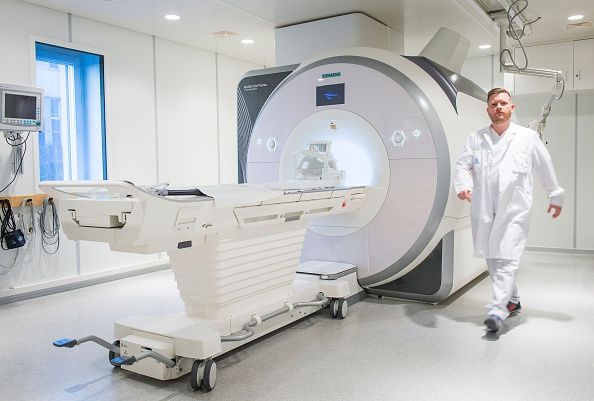Do MRI and CT Scans Cause Cancer? Everything We Know About The Procedures’ Safety

A new study examining the safety of magnetic resonance imaging (MRI) exposure during pregnancy has found that there are no increased safety risks, for either the mother or fetus, during the first trimester. Researchers also concluded that a Gadolinium MRI is unsafe at any time during pregnancy.
MRI scans help detect abnormalities in organs, blood vessels, and other tissues. These machines use powerful magnetic fields and radio frequency pulses to produce detailed pictures of organs, soft tissues, bone and other internal body structures — but do they pose significant health risks? Recently, researchers have been reevaluating the safety of radiation used in medical imaging, including MRI and computed tomography (CT) scans. The new study, published in JAMA, did not find a link between MRI and increased risk to the fetus or in early childhood, but other research on both types is inconclusive, and some medical experts advise against unnecessary exposure.
Researchers at the National Cancer Institute estimate that 29,000 future cancer cases could be attributed to the 72 million CT scans performed in the country in 2007. Additionally, a 2009 study showed that there is one extra case of cancer for every 400 to 2,000 routine chest CT exams.
CT scans work by combining a series of X-ray images taken from different angles. According to Scientific American, one single CT scan subjects the human body to between 150 and 1,100 times the radiation of a conventional X-ray. The U.S. Food and Drug Administration does not regulate how CT scanners are used or set dose limits. Therefore, many different centers end up using varying amounts of radiation.
“The jury is still out on whether there is a small cancer risk,” said Donald Frush, chief of pediatric radiology at Duke University Medical Center. “But the safest thing is to assume that no amount of radiation is safe. And if we find out in 20 years that a little bit was not harmful, then what did we lose by trying to minimize the dose?”
So, do the benefits of MRI and CT scans outweigh the risks? With convincing research that these produces could be dangerous, scientists are working to figure out how to reduce radiation levels in medical imaging procedures.
Read more:
CT Scanning In Emergency Rooms Doubles In Past Decade Due To 'Superior Diagnostic Accuracy'
Published by Medicaldaily.com



























